- Home
- Haruki Murakami
Absolutely on Music Page 2
Absolutely on Music Read online
Page 2
In December 2010, Ozawa performed a dramatic comeback concert at Carnegie Hall with the Saito Kinen Orchestra, the orchestra he co-founded in 1984 to honor his mentor Hideo Saito (1902–74). (“Kinen” means “memorial.”) I could not attend the concert, unfortunately, but judging from the recording, I found it a wonderful, inspired performance, though the extreme physical toll it took on Ozawa was obvious to all observers. After six months of recuperation, Ozawa then directed the Seiji Ozawa International Academy Switzerland, which is held every summer in the town of Rolle on the banks of Lake Geneva; and after intensively training a select group of young musicians, he took to the podium again in Geneva and Paris, conducting the academy’s orchestra in two highly successful concerts. This time, I accompanied Ozawa to observe the entire ten-day period of training and performance. I was simply awestruck by the fierce intensity with which he threw himself into the work. I could not help worrying about his health, however, and how it would hold up under such a strain. All the music I heard was wonderful but Ozawa was the one who really made it possible, and he did so by using up every last bit of energy that he had to give.
As I watched him in action, however, one thing dawned on me: He can’t help himself; he has to do this. His doctor, his gym trainer, his friends, and his family could all try to stop him (and of course they did try, to a greater or lesser degree), but this was something he had to do. For Seiji Ozawa, music was the indispensable fuel that kept him moving through life. Without periodic injections of live music into his veins, he could not go on living. There was only one way in this world for him to feel truly alive, and that was for him to create music with his own hands and to thrust it as a living, throbbing thing into the faces of an audience: “Here!” Who could possibly tell him to stop? I too wanted to say to him, “You really ought to hold off a little, take some time to recover, and start performing after you’ve got your strength back. I understand how you feel, but you know what they say— ‘Slow and steady wins the race.’ ” Really that was the only reasonable response, but I couldn’t bring myself to say it to him when I saw him wringing every ounce of strength out of his body to stand upright on the podium. I felt that those words would become a lie once I spoke them. To put it simply, this man was living in a world that transcended reasonable ways of thinking, just as a wolf can only live deep in the forest.
—
The interviews in this book were not undertaken to comprise a sharply chiseled portrait of Seiji Ozawa. They are intended neither as reportage nor as a theory of what makes one person tick. My only purpose in this book was for me, as a music lover, to have a discussion of music with the musician Seiji Ozawa that was as open and honest as possible. I simply wanted to bring out the ways that each of us (though on vastly different levels) is dedicated to music. That was my original motive, and I like to think that, to some extent, I have succeeded. The experience has left me with the deep satisfaction of knowing that I spent several delightful days with Seiji Ozawa listening to music. Perhaps the most accurate title for the book would have been My Afternoons with Seiji Ozawa.
It will be clear to anyone who reads this book that there are some breathtaking gems scattered among Ozawa’s many pronouncements. He speaks plainly, and the words he chooses flow naturally as part of the conversation, but among them lurk finely honed fragments of a soul as keen as a blade. To put it in musical terms, these are like subtle “inner voices” that you would fail to catch in a piece of music if you were only half listening. In that sense, Ozawa was an interviewee with whom it was impossible to relax. I had to stay constantly alert in case I might miss some furtive tone that I knew would be there. If I missed those subtle cues, the very meaning of what he said could be lost.
In that sense, Seiji Ozawa is simultaneously an unschooled “child of nature” and a fountain of deep, practical wisdom; a man who must have what he wants immediately and who can be infinitely patient; a man with bright confidence in the people around him who also lives in a deep fog of solitude. To emphasize just one side of this complex man would present a distorted portrait. In this book I have tried to reproduce what he told me as fairly as possible, in written form.
In any case, the time I spent with Seiji Ozawa was tremendously enjoyable for me, and I hope through this book to be able to share some of that joy with my readers. I would like to express my deep thanks here to Seiji Ozawa himself for having granted me so much time. Continuing these interviews at regular intervals over a long period involved many logistical difficulties, but my greatest reward came when the maestro told me: “Come to think of it, I’ve never really talked about music like this before, in such a focused, organized way.”
I hope with all my heart that Ozawa continues to give the world as much “good music” as he can for as long as possible. Like love, there can never be too much “good music.” The number of people who use it as a fuel to recharge their appetite for life is beyond counting.
—
Here I would like to thank Koji Onodera, who helped in many ways with the editing of this book. Because my own technical knowledge of music is limited, I benefitted greatly with regard to both terminology and factual information from the advice of Mr. Onodera and his deep familiarity with classical music.
HARUKI MURAKAMI
First Conversation
Mostly on the Beethoven Third Piano Concerto
We had our first conversation on November 16, 2010, in my home in Kanagawa Prefecture, to the west of Tokyo. Together we simply pulled LPs and CDs off my shelves and talked about the music as it played. My plan for each session was to keep the discussion from wandering by setting a tentative theme. The central topic for our first session was the Beethoven Third Piano Concerto in C minor. We got to this by way of discussing the Gould and Bernstein performance of Brahms’s Piano Concerto no. 1 that he had mentioned to me earlier, but it so happened that Ozawa was scheduled to perform the Beethoven with Mitsuko Uchida the following month in New York.
In the end, due to a chronic back problem aggravated by the long flight and to a case of pneumonia brought on by the severe cold wave that struck New York that winter, Ozawa unfortunately had to cede the baton to a replacement, but on this particular afternoon we were able to spend a full three hours in a conversation that centered on the concerto. We took occasional breaks to prevent Ozawa from tiring and enable him to take in the periodic nutrition required by his medical condition.
Beginning with the Brahms Piano Concerto no. 1
MURAKAMI: I remember you once told me about a 1962 performance of the Brahms Piano Concerto no. 1 by Glenn Gould with Leonard Bernstein conducting the New York Philharmonic. Before the performance, Bernstein turned to the audience and briefly announced that they were about to play the concerto according to Mr. Gould’s interpretation, with which he did not agree.
OZAWA: Yes, I was there. As Lenny’s assistant conductor. All of a sudden, before they started playing, Lenny came out on the stage and started talking to the audience. I couldn’t catch his English, so I asked the people around me what he was saying, and I got the general idea.
MURAKAMI: The speech is included in this live recording that I have here.
Bernstein’s speech:
Don’t be frightened, Mr. Gould is here. [Audience titters.] He’ll appear in a moment.
I’m not, as you know, in the habit of speaking on any concert except the Thursday-night previews, but a curious situation has arisen, which merits, I think, a word or two. You are about to hear a rather, shall we say, unorthodox performance of the Brahms D-minor Concerto, a performance distinctly different from any I’ve ever heard, or even dreamt of for that matter, in its remarkably broad tempi and its frequent departures from Brahms’ dynamic indications. I cannot say I am in total agreement with Mr. Gould’s conception, and this raises the interesting question: “What am I doing conducting it?” [Audience murmurs.] I’m conducting it because Mr. Gould is so valid and serious an artist that I must take seriously anything he conceives in good fait
h, and his conception is interesting enough so that I feel you should hear it, too.
But the age-old question still remains: “In a concerto, who is the boss—the soloist [audience laughter building] or the conductor?” [More laughter.] The answer is, of course, sometimes one, sometimes the other, depending on the people involved. But almost always, the two manage to get together by persuasion or charm or even threats [laughter] to achieve a unified performance. I have only once before in my life had to submit to a soloist’s wholly new and incompatible concept, and that was the last time I accompanied Mr. Gould. [Audience roars with laughter.] But this time the discrepancies between our views are so great that I feel I must make this small disclaimer.
Then why, to repeat the question, am I conducting it? Why do I not make a minor scandal—get a substitute soloist or let an assistant conduct it? Because I am fascinated, glad to have the chance for a new look at this much-played work. Because, what’s more, there are moments in Mr. Gould’s performance that emerge with astonishing freshness and conviction. Thirdly, because we can all learn something from this extraordinary artist, who is a thinking performer. And finally, because there is in music what Dimitri Mitropoulos used to call “the sportive element,” that factor of curiosity, adventure, experiment, and I can assure you that it has been an adventure this week collaborating with Mr. Gould on this Brahms concerto, and it’s in this spirit of adventure that we now present it to you. [Sustained applause.]
OZAWA: That’s it, that’s it. But you know, at the time I felt that saying something like this before a performance was not the right thing to do. I still feel that way.
MURAKAMI: But he does it with so much humor, and the audience, while taken aback, is laughing quite a lot.
OZAWA: Well, sure, Lenny was such a good talker.
MURAKAMI: And there’s nothing grim about the speech. He just wanted to make it clear beforehand that it was Gould’s wish to set the tempo, not his.
The music begins.
MURAKAMI: Hmm, it is slow, isn’t it? Kind of strange. I can see why Bernstein wanted to explain himself to the audience.
OZAWA: This part is clearly in large duple time, two beats with the counts one two three/four five six. Lenny is conducting this as six beats because duple would be too slow to maintain a consistent interval between beats. He has no choice but to conduct with six beats. Usually it’s one and and/two and and, conducted as one…two…Sure, there are lots of different ways to do it, but just about everybody does it like that. Here, though, at this slow tempo, he couldn’t maintain a consistent interval between beats, so he has to go one two three/four five six. That’s why the flow isn’t right and tends to get bogged down like this.
MURAKAMI: How about the piano?
OZAWA: I’m sure it’ll be the same.
The piano part begins (4:29).
MURAKAMI: Really, the piano is slow, too.
OZAWA: Yes, but it sounds perfectly fine, especially if you’ve never heard anyone else play it. You just assume that’s the way the piece goes. Kind of like a relaxed tune from the countryside.
MURAKAMI: But it must be hard for the performer to stretch it out like this.
OZAWA: Yes. Listen, though. When it gets to this part, you can’t help beginning to wonder.
MURAKAMI: Around here [the volume grows, the timpani enter (5:18)] the orchestra sounds as if it’s beginning to come apart.
OZAWA: True. This wasn’t recorded at Manhattan Center, was it? At Carnegie Hall?
MURAKAMI: Right. It’s a live recording from Carnegie Hall.
OZAWA: I thought so. That’s why the sound is so dead. You know, they did a proper studio recording of the performance the next day in Manhattan Center.
MURAKAMI: Of the same Brahms piece?
OZAWA: The same one. But the record was never released.
MURAKAMI: No, I’m pretty sure it’s not available.
OZAWA: I was there for that one, too. As assistant conductor. Where Lenny said in his speech that he could have let an assistant conduct it—that’s me! [Laughs.]
MURAKAMI: Meaning, if negotiations had broken down between the two of them, you might have conducted the piece instead of Bernstein…Still, this performance does have a good deal of tension to it.
OZAWA: Sure, sure. It’s a little unpolished, though.
MURAKAMI: Played this slowly, it sounds as if it could fall apart at any moment.
OZAWA: Yes, it’s right on the edge.
MURAKAMI: Come to think of it, when Gould played with the Cleveland Orchestra, he and George Szell couldn’t agree and an assistant took over for Szell. I read that somewhere.
The solo piano section of the first movement begins (5:56).
OZAWA: It’s strangely slow, but playing it like this, Gould makes it work. It doesn’t feel wrong at all.
MURAKAMI: He must have such an acute sense of rhythm. I mean, to be able to keep stretching it out like that, adjusting his sound inside the framework of the orchestra…
OZAWA: He’s got an absolutely solid grasp of the flow of the music. But Lenny’s got it absolutely right, too. He’s putting his heart and soul into it.
MURAKAMI: But isn’t this piece usually played as a big, passionate outburst?
OZAWA: True, with a lot more passion. You’re right, this performance is not what you’d call passionate.
The piano plays the first movement’s beautiful second theme (7:35).
OZAWA: Here, the slow tempo is just fine. With this second theme. Good, don’t you think?
MURAKAMI: It really is.
OZAWA: Before, the loud section was maybe a little sluggish or unsophisticated, but this really grabs you.
MURAKAMI: Before, you said, “Lenny’s got it absolutely right…He’s putting his heart and soul into it,” but you also said you thought it was not a good idea to get up like that and give a speech before a performance.
OZAWA: No, I don’t think it’s a good idea. But from Lenny, people were willing to accept it, I suppose.
MURAKAMI: I guess you mean it’s better to present music as music, without any added preconceptions. But from his point of view, Bernstein probably wanted to make it clear just who decided on the concept of the performance.
OZAWA: I suppose so.
MURAKAMI: Ordinarily, though, in a concerto, who is “the boss”—the soloist or the conductor?
OZAWA: In the case of a concerto, it’s mostly the soloist who does the heavy rehearsing. The conductor begins working on it maybe two weeks or so before the performance, but the soloist can be wrestling with it for six months or more. The soloist gets totally inside the piece.
MURAKAMI: Okay, but don’t you have situations where the conductor is so far above the soloist that he decides everything without consulting the soloist?
OZAWA: Maybe so. Take the violinist Anne-Sophie Mutter, for example. Maestro Herbert von Karajan discovered her and right away had her recording Mozart and Beethoven concertos. You listen to those, and it’s overwhelmingly Karajan’s world. So then they thought it would be a good idea for her to play with a different conductor for a change, and Karajan chose me. “Do the next one with Seiji,” he said. So we recorded Lalo’s Spanish something-or-other. She was barely twenty years old at the time.
MURAKAMI: Edouard Lalo’s Symphonie espagnole. I’m sure I’ve got a copy of that somewhere.
Rustling sounds as I hunt for the record, which finally turns up.
OZAWA: This is it! This is it! Wow, I haven’t seen this thing for years. The French radio orchestra [Orchestre National de France]. I can’t believe you have this. Even I don’t have a copy. I used to have a bunch of them, but I gave them away or people borrowed them and never brought them back…
Gould and Karajan, Beethoven Piano Concerto no. 3 in C Minor
MURAKAMI: The main thing I wanted you to listen to today was the Karajan and Gould performance of the Beethoven Third Piano Concerto. It’s not a studio recording. It was recorded live at a 1957 performance in Berlin. With the Berlin
Philharmonic.
The orchestra’s long, weighty introduction ends, Gould’s piano enters, and the interplay of the two begins (3:19).
MURAKAMI: Right here, the orchestra and piano are not together, are they?
OZAWA: No, you’re right, they’re out of sync here. Oh, here, too, they come in differently.
MURAKAMI: Does this mean they haven’t completely worked things out in advance during the rehearsals?
OZAWA: No, I’m sure they must have. But in passages like this, the orchestra is usually supposed to adjust to what the soloist is playing…
MURAKAMI: In those days, Karajan and Gould were musicians of very different status, I guess.
OZAWA: Well, sure, it was 1957—that was probably not long after Gould’s European debut.
MURAKAMI: Tell me if I’m wrong, but that whole first three and a half minutes or so, where it’s just the orchestra playing, sounds really Beethovenian to me, tremendously German. But then the young Gould comes in, and it seems he kind of wants to get away from that and loosen it up and make his own music. So then the two sides never quite get together, or they just coolly go off in their own directions and get farther and farther apart. Not that it seems wrong or anything…
OZAWA: Gould’s music is very free. Also, maybe it stems from the fact that he’s Canadian, a non-European living in North America. That might make for a big difference, too. That he doesn’t live in the German-speaking world. By contrast, Maestro Karajan’s got Beethoven solidly rooted inside him and it’s not going to budge. He might as well be out there playing a symphony. Plus he has absolutely no intention of cleverly adapting his style to fit Gould’s.

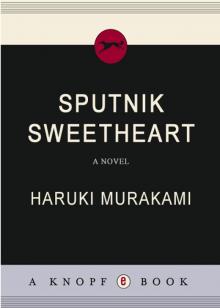 Sputnik Sweetheart
Sputnik Sweetheart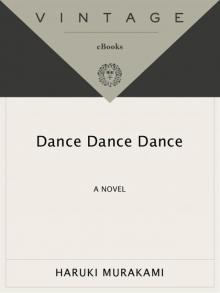 Dance Dance Dance
Dance Dance Dance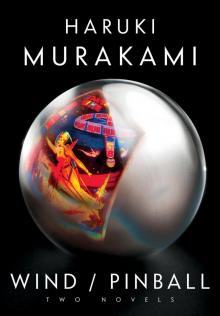 The Wind (1) and Up Bird Chronicle (2)
The Wind (1) and Up Bird Chronicle (2) Blind Willow, Sleeping Woman
Blind Willow, Sleeping Woman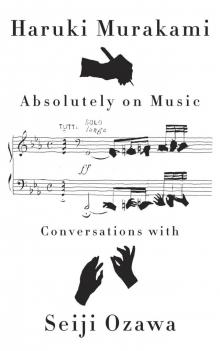 Absolutely on Music: Conversations With Seiji Ozawa
Absolutely on Music: Conversations With Seiji Ozawa Norwegian Wood
Norwegian Wood South of the Border, West of the Sun
South of the Border, West of the Sun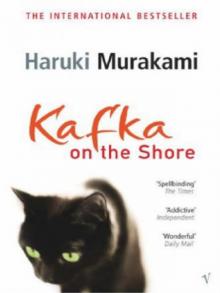 Kafka on the Shore
Kafka on the Shore Men Without Women
Men Without Women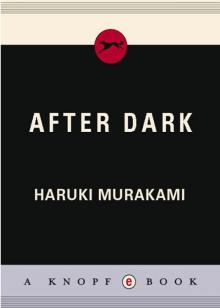 After Dark
After Dark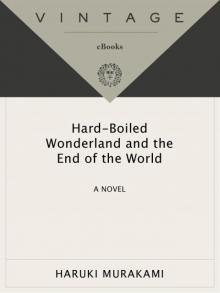 Hard-Boiled Wonderland and the End of the World
Hard-Boiled Wonderland and the End of the World 1q84
1q84 The Wind-Up Bird Chronicle
The Wind-Up Bird Chronicle Underground: The Tokyo Gas Attack and the Japanese Psyche
Underground: The Tokyo Gas Attack and the Japanese Psyche Vintage Murakami
Vintage Murakami The Elephant Vanishes: Stories
The Elephant Vanishes: Stories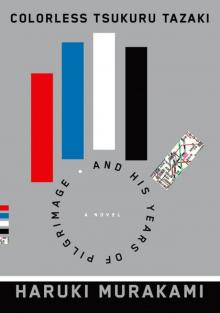 Colorless Tsukuru Tazaki and His Years of Pilgrimage
Colorless Tsukuru Tazaki and His Years of Pilgrimage First Person Singular
First Person Singular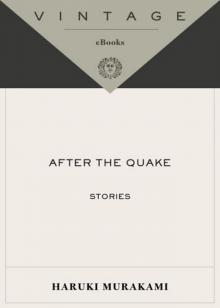 After the Quake
After the Quake A Wild Sheep Chase
A Wild Sheep Chase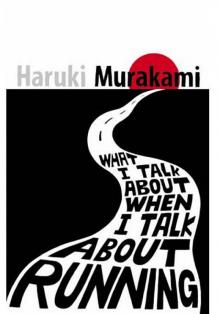 What I Talk About When I Talk About Running
What I Talk About When I Talk About Running Birthday Girl
Birthday Girl The Elephant Vanishes
The Elephant Vanishes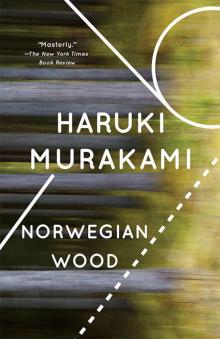 Norwegian Wood (Vintage International)
Norwegian Wood (Vintage International)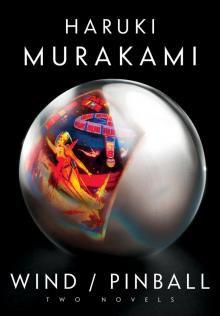 Wind/Pinball
Wind/Pinball Norwegian Wood Vol 1.
Norwegian Wood Vol 1. Underground
Underground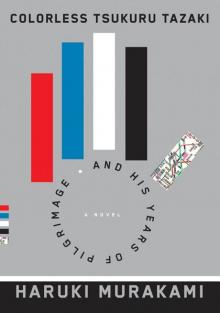 Colorless Tsukuru Tazaki and His Years of Pilgrimage: A novel
Colorless Tsukuru Tazaki and His Years of Pilgrimage: A novel Killing Commendatore
Killing Commendatore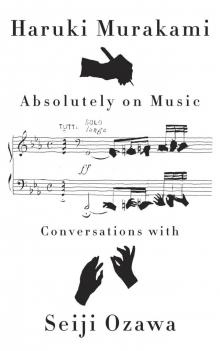 Absolutely on Music
Absolutely on Music